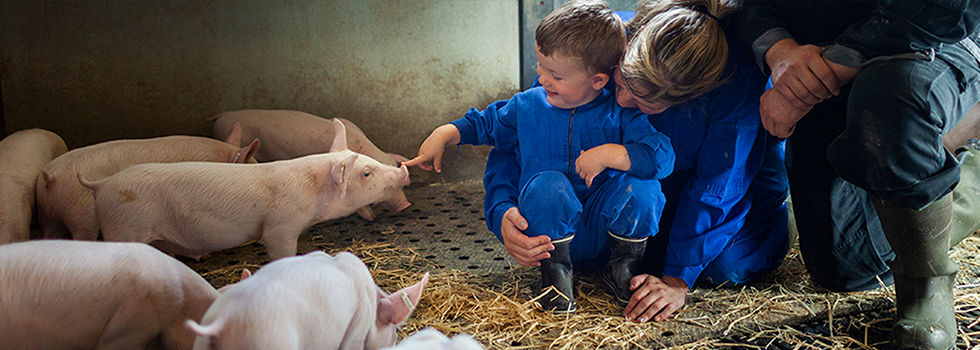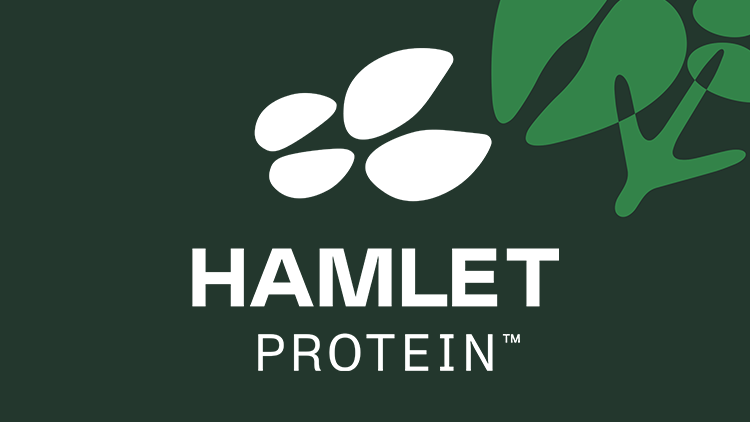Promotional Features
Young animals require higher protein concentration in their diets
By Nicolas Anglade - Category manager ruminants, Jessika van Leeuwen - Category manager swine & Alfred Blanch - Category manager poultry
The nutritional needs are quite different between young and more mature animals. Young animals grow and develop at a fast pace, gaining muscle, developing organs and growing bones while their brains and nervous system also develop. Therefore, the amino acids requirement of young animals is higher per energy unit than of more mature animals and as a consequence they require a higher concentration of protein in their diets.
These nutritional needs are met using a dense diet with increased levels of protein and minerals. Until young animals are weaned, all their nutritional input comes from their mother’s milk or a milk replacement formula (mammals). Weaning means not only an abrupt separation from the mother but also a complete dietary change. A good dietary start at weaning is crucial to ensure health and performance later on in life. In poultry, genetic improvement has led to an increased metabolic rate of the embryo throughout incubation, resulting in a higher utilization of yolk content during incubation. Consequently, fewer nutrient reserves are left in the residual yolk at the time of hatching and remain available to the hatchlings for only up to 72 hours after hatching. So like what is needed for mammals at weaning, also for chicks it is crucial to feed them a diet that continues to maintain appropriate growth and development during the first days of life.
Protein precision feeding for young animals
A well formulated diet for young animals contains all the essential amino acids; amino acids the animals cannot synthesize themselves or at least not in sufficient amounts. Not only should they be present in the feed but also in the right amount and relative quantity. If the balance between, at least, the essential AA’s is off, the AA’s in excess will be excreted. Especially young animals struggle to obtain sufficient AA’s from their diets as they face multiple challenges:
They are born with an immature digestive system that develops as life stages progress. Especially protein digestion is difficult as the required enzymatic digestion may take several days to weeks, depending on the species, to become fully operational (Figure 1.) (Chicks – 7-10 days of age, Piglets – 10 weeks of age and Calves – 6 months of age).
As the amino acid requirement per energy unit is higher for young animals their diets are more dense in protein (higher CP levels see Table 1.) One factor behind this relatively high requirement in young animals is hypertrophy, the fact that organs and muscle growth in young animals is high relative to e.g. fat growth. (Muscle and organ growth require more AA than energy opposite fat growth). For example, the intestinal tract of a weaned piglet grows from 4 meters around weaning to 15 meters at 11 weeks of age; this equals 14 cm per day.
Any (small) reduction in protein digestibility has therefore bigger effects in young animals than in more mature animals and quickly results in less uniformity in the flock or herd as animals that are not able to absorb the maximum amount of nutrients fall behind immediately. Protein precision feeding is needed to support the rapid growth of young animals.
Figure 1. Enzyme activity increase with age in piglets
How to choose the right protein ingredient for young animals
Vegetal protein ingredients are the most important source of protein in young animal diets, even in the diets with a large inclusion of cereals. They are therefore included in high inclusion levels in the diets and quality of those protein ingredients is crucial. Some factors to consider when choosing the right protein ingredients are:
- Protein content of the ingredients
- Digestibility and availability of the proteins and amino acids
- Amino acid profile of the proteins
- Concentration of Antinutritional factors, ANF’s in the ingredient
- Chemical composition of the ingredient
- Cost price
- Sustainability of the ingredient
Table 1. Protein in diets from cereals respectively protein ingredients
Diet for: | % Protein in diet |
Cereal inclusion % | % Protein in cereal | % Protein from cereal, |
% Protein from Protein ingredients |
Piglet | 18 | 60 | 11 | 33 | 67 |
Grower | 16 | 75 | 11 | 50 | 50 |
Starter Chick | 22 | 60 | 11 | 30 | 70 |
Grower Chick | 19 | 67 | 11 | 39 | 61 |
Calf Starter (dry) | 20 | 60 | 11 | 30 | 70 |
Some protein sources are more suitable for young animals than other protein ingredients. In general protein ingredients are considered suitable for young animals when:
- The fibre content is not too high
- The ANF’s concentration is too low
- The Amino Acid profile is correct
- The protein digestibility and availability is good
- The palatability is good
- The myco -and endotoxin levels are extremely low
All vegetable diets in young animal nutrition
Animal-based proteins have historically been a part of young animal diets for a long time as they can serve as highly concentrated sources of amino acids, B-vitamins, and minerals with good digestibility due to the absence of ANF’s in animal-based protein sources. However, as more and more production systems reduce the use of in-feed antimicrobials like antibiotics and ZnO the use of animal based protein sources comes with an increasing disease risk. Animal proteins are predisposing factors to intestinal disorders like for instance Clostridium infections in birds in antibiotic-free poultry production. Furthermore, many animal proteins are relatively expensive, either because of scarceness or alternative use in human or pet food production.
Vegetable protein ingredients contain components which may restrict their inclusion in young animal feed, so called anti-nutritional factors (ANF’s) as they are interfering directly with the gut and digestion or microbiota. ANF’s are found in many vegetable proteins like soy, peas and other legumes (trypsin inhibitors, antigenic proteins). Also, potato protein concentrate contains a relatively high ANF’s content (trypsin inhibitors, solanine). Presence of certain ANF’s in different ingredients reduces the digestibility of protein leading to a larger proportion of protein reaching the hindgut where it can be fermented by (harmful) bacteria. As a result of this process, toxins are produced that impair the integrity and functioning of the intestinal membrane and activate the immune system. Other ANF’s can trigger a direct inflammatory response in the gut leading to a chronical inflammation with reduced absorption capacity and increased nutrient requirements to sustain the inflammation. This also results in less nutrients available for growth and performance of the animals resulting in impaired health and decreased feed efficiency. Vegetable proteins from starch production; corn gluten and wheat gluten lack the right composition to compliment the AA profile of existing cereals in the diet. Furthermore, they contain prolamins, which may compromise gut integrity.
ANF’s can be partly reduced by processing of the protein ingredient through heat treatment or fermentation, but the most effective way to eliminate ANF’s is through enzymatic treatment. The use of enzyme-treated soybean meal in diets for young animals minimizes the activation of feed-induced immune reactions at an early age, avoiding negative effects on performance later in life.
In conclusion
Even though young animals have the highest protein requirement they also are the least equipped to digest protein. Acknowledging this discrepancy is crucial when formulating the right diet. Special care should be taken when selecting the right protein sources for young animal diets. Market commodities such as protein meals, while they are suitable for older animals, are poorly tolerated by young animals. The right protein ingredient for young animals should combine the right amino acid profile with good digestibility and low ANF’s content while not posing any sanitary risk. Protein precision feeding is key to successful young animal raising.








